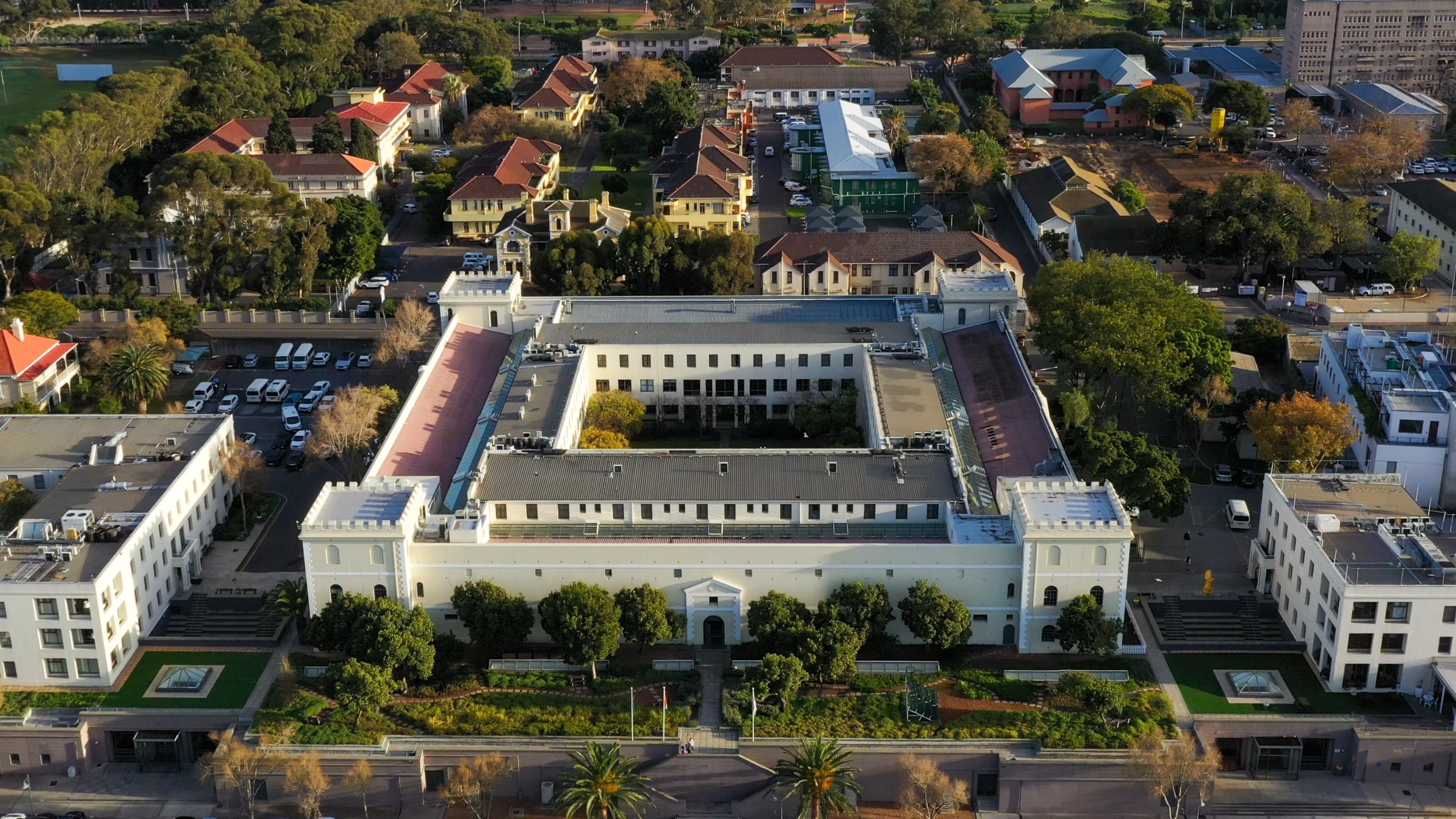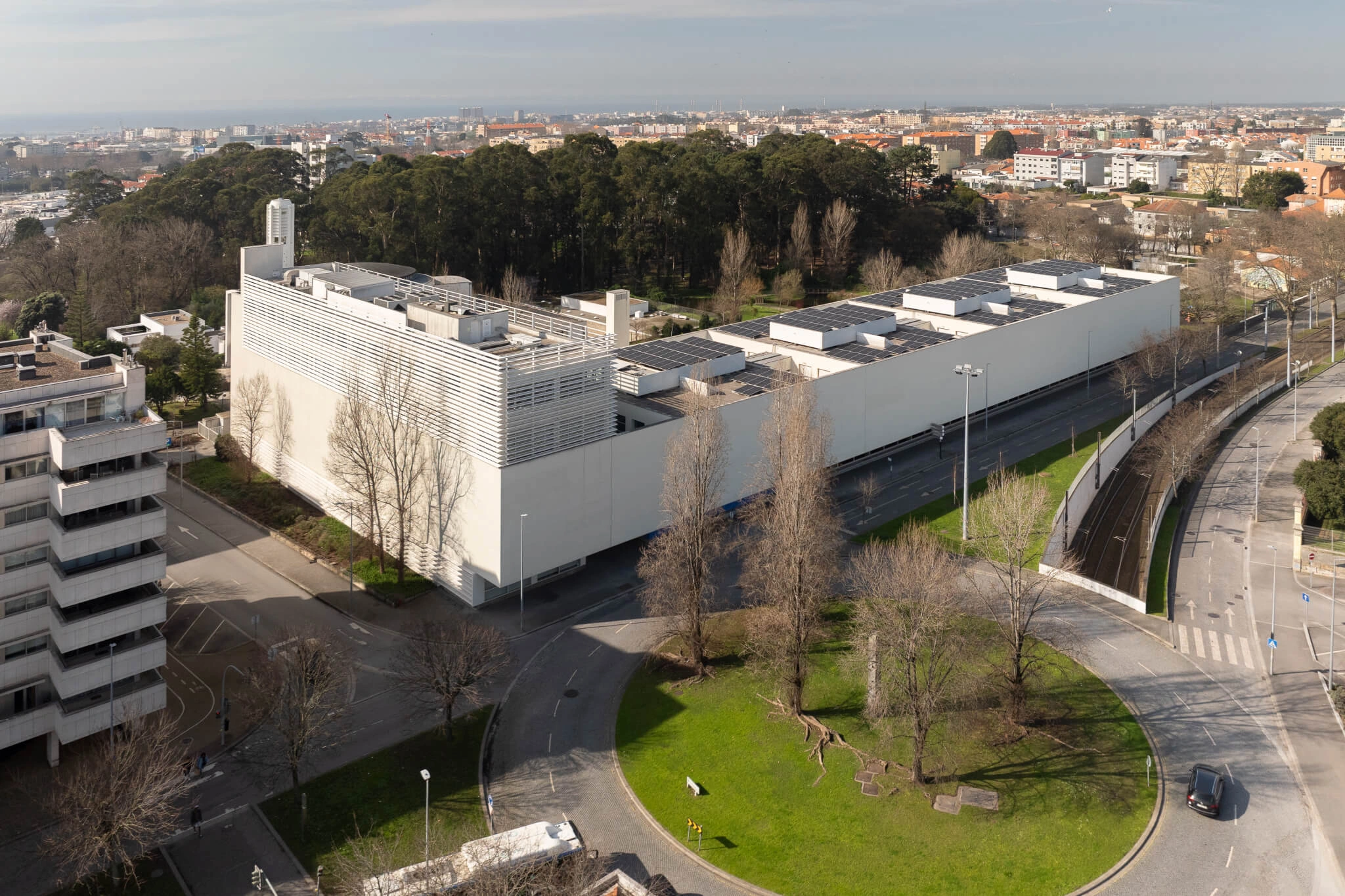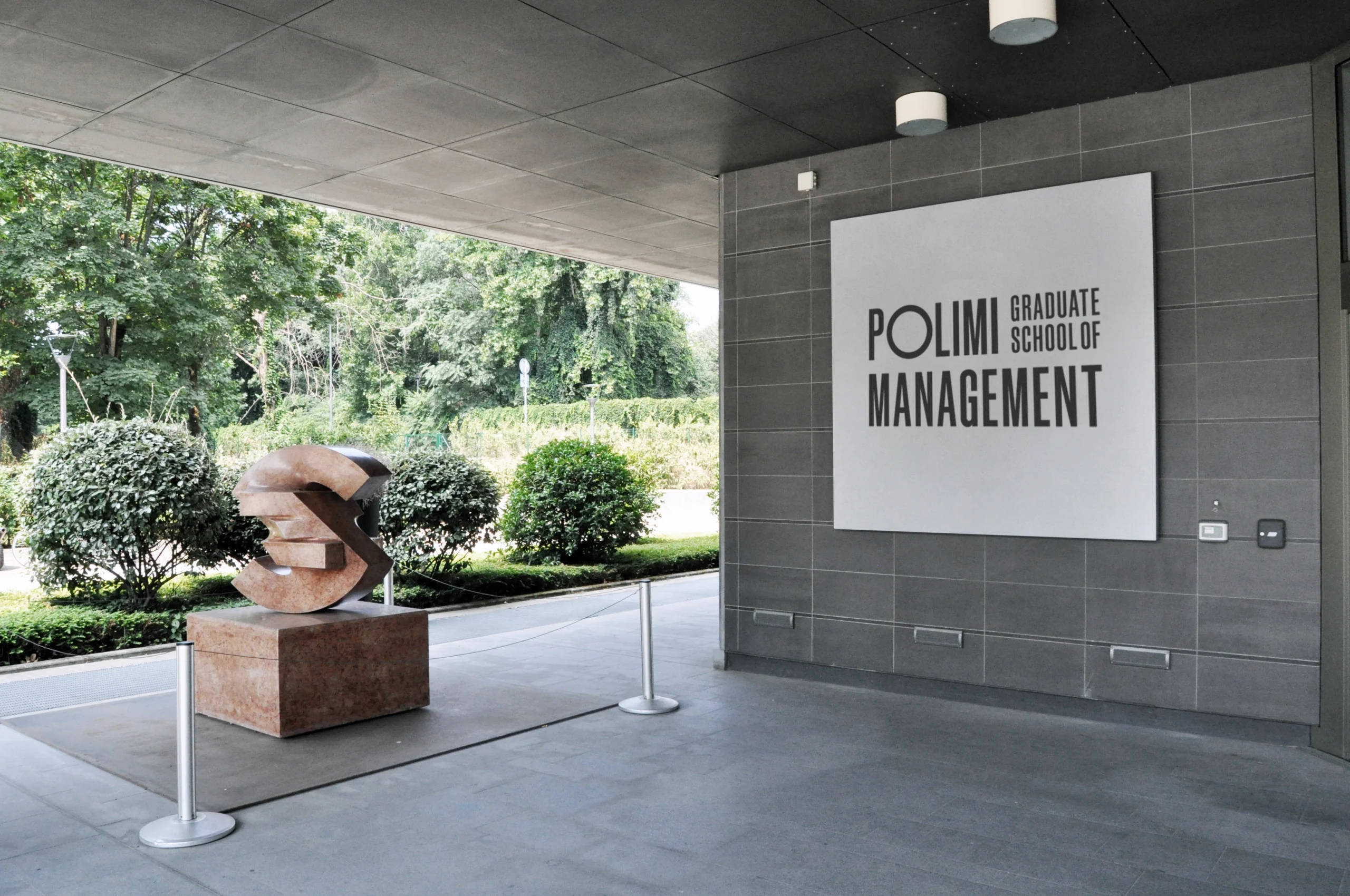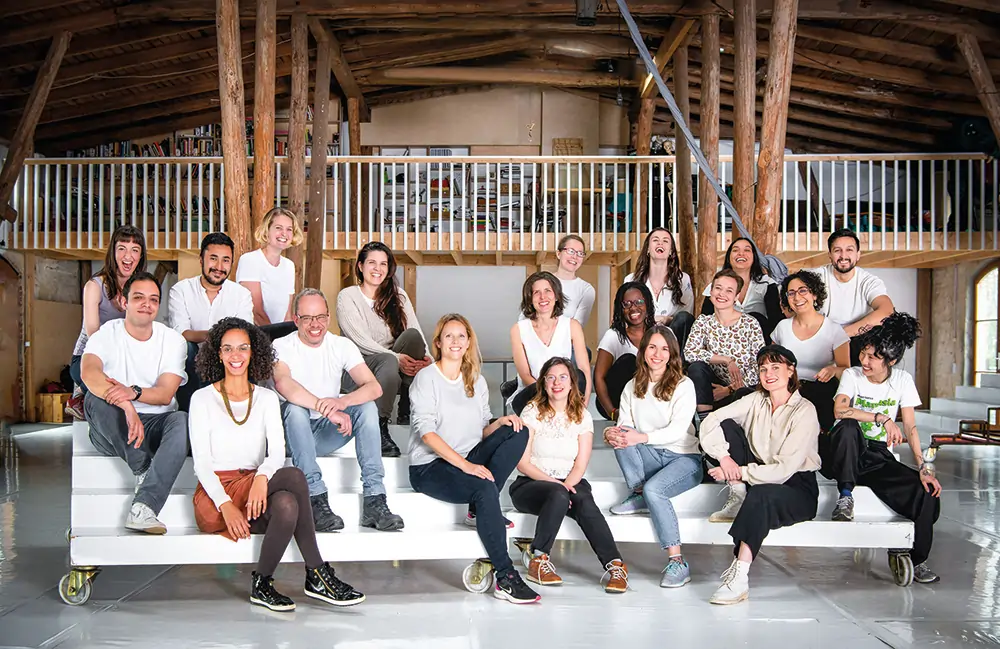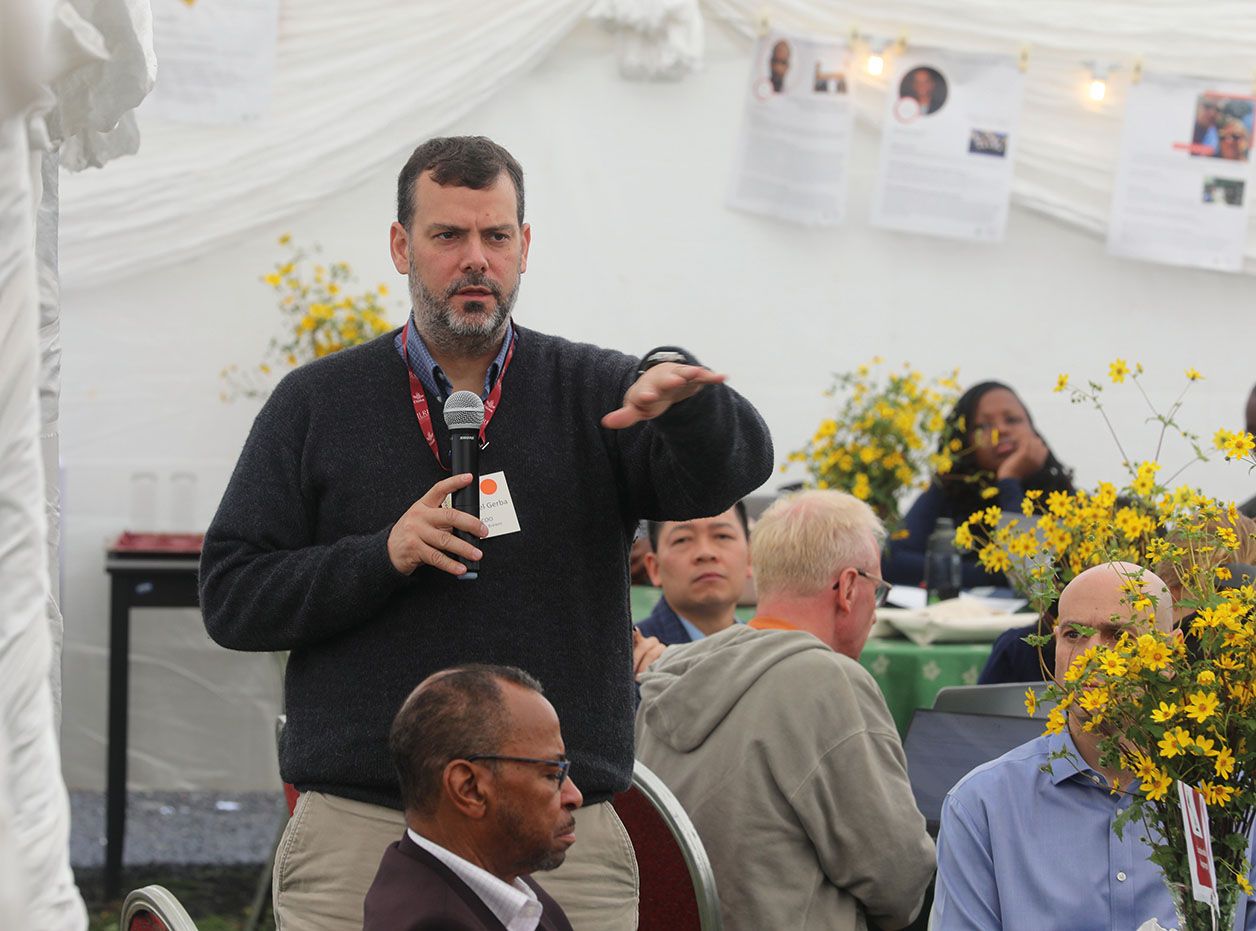Why progress is not parity

John E. Kaye
- Published
- Executive Education, Home

Nalisha Patel of GMAC explores a continuing lack of gender balance in European graduate management education, and asks how can things can be improved.
Business schools, and the world of business more generally, have been historically perceived as a masculine dominated space. In fact, when Forbes recently announced their 2022 Richest Billionaires in the World, only 13 of the top 100 were women. Now, I don’t want the takeaway from this piece to be around achieving a single 50% statistic. That is only one of a myriad of complex measures. The real goal here is around having balance in our business ecosystem which means that business and thus society can thrive- balance comes from an inclusive and diverse environment where contradictions and context are accepted and considered gracefully at all points.
Both stereotypically masculine and feminine (regardless of gender) traits are essential in balance to explore ideas and opportunities, spot risks, see the big picture, plan the detail, connect the dots, engage stakeholders. So the points here are some thoughts on how we begin to address one facet of inclusion- and a very important societal topic at a time where historical male/female roles have evolved.

“Latin America sees the most female graduate business
degree holders“
Europe lagging behind
At the higher end of business, the gender balance is strikingly low, and business schools have a key part to play is helping improve this gender balance, given they are training many of the global leaders of tomorrow. Other graduate programmes, in medicine and law for instance, have had gender parity for many years, yet there persists a lack of female participation in graduate management education (GME). The number of female representations has persisted at around 35%-40%. Over the last ten years, though, more and more women have been encouraged to apply to graduate management education. In the last GMAT® testing year, 47% of the total people who sat the test were women, up from 40% a decade ago.
Reducing the gender gap in the business world starts in education, and the increased push for female representation in both graduate management education and wider business has helped to improve this female participation. In the US for instance, the number of female CEOs in the Fortune 500 has risen from 24.5% in 2010, to 29.3% in 2020. And the statistics are even starker when you look back further. In 2000, only two out of 500 CEOs were women in the Fortune 500. Twenty-one years later, we see 41 of these Fortune 500 companies having female CEOs – amazing progress yes, but not yet parity.
But, the groundwork of boosting gender parity for those at the height of their careers begins at their foundations, their beginning – which, for many, is a business school. And now, for the first time, we can see exactly what gender parity in graduate management education looks like around the world. At the end of last year, the Graduate Management Admission Council (GMAC) released the first-ever global study of diversity in graduate management education.
The Global Diversity of Talent report shows that, globally, women hold 44.8% of graduate business degrees. Across specific regions, Latin America sees the most female graduate business degree holders (53.9%), followed by East Asia and the Pacific (51.7%). Most striking, though, is the fact that Europe lags behind the rest of the world in gender parity in GME. 38.4% of GME degrees are held by women in Europe, lower than both the global average and other regions such as North America and the Middle East. But why is that the case?
Unfortunately, answering this question isn’t easy. While it may be tempting to compare Europe to the rest of the world, we should be wary of generalising. In fact, some of Europe’s smaller nations have achieved more than 50% female GME holders. In Luxembourg, women hold 58.7% of graduate
degrees in business; in Greece, the figure is 53.3%, yet unfortunately, in some countries the percentage is much lower.
One possible reason for the lower than average attainment in Europe could be that women are choosing to enter GME later in life in the region. Though Europe has a lower proportion of female GME holders than the rest of the world, it also has the largest share of people aged 30-34 in the GME pipeline (41.8%) and the smallest share of people aged 20-24 (19.8%). However, the fact is, there are many factors that affect how many women attend business school, including cultural/regional differences, individual motivations for applying, and the sectors they wish to work in. East Asia and the Pacific, for example, has the largest pool of student aged graduate business talent, and thus a larger proportion of female GME holders.
Whatever the reason for the disparity, it’s certainly true that European institutions are working to close the gap. Many European business schools have already increased their gender parity to at least 50/50. At ESSEC Business School, in France, their Global MBA has more than 50% female participants, whilst other schools in Europe, such as Polimi Graduate School of Management in Italy, ESCP Business School, based across the whole of Europe, and Alliance Manchester Business School, in the UK, all boast above 45% female students on their latest MBA cohorts.

“Little progress has been made in increasing gender equity in faculty“
Work to do
It is not just business schools doing the work, either. Non-profits like the Forté Foundation are committed to widening opportunities for women in business, and they have a huge range of initiatives to do this. The Forté Fellows scholarship programme is integral in increasing access to MBAs for women, while their eight-month roadmap for applying to business school, MBALaunch, helps women at the very beginning of their application journey. While the numbers are encouraging and heading in the right direction, there is still a lot more to do. As I see it, there are three ways that business schools should be encouraging women to apply to their programmes.
Firstly, there should be female representation across alumni, academics and staff at schools, creating a community of female talent across the business school ecosystem. While gains may have been made in increasing the number of women in GME student bodies, little progress has been made in increasing gender equity in faculty, which of course comes with its own challenges. In fact, only 9 of the top 100 European schools ranked by the Financial Times, have a majority female faculty. And 65 of those top 100 have a female faculty percentage of 30% or less. But progress isn’t being made in this area, and it is a global trend. At the top 20 business schools globally, there was just a 1-2% increase in the number of female faculty between 2019 and 2020.
The second factor is flexibility. The global pandemic has widened access to flexible degrees like online and part-time programmes, and that’s had a huge impact on under-represented groups being able to access GME irrespective of their circumstances. This flexibility for programmes, both in terms of location and timings too, can allow wider participation for a broad spectrum of potential students, making a graduate management education much more accessible for typically under-represented groups who may have not had the time, resources or money to study at business school before.
Thirdly, there should be access to finance specifically for women who want to pursue GME. While the Forté Fellows programme is a start, business schools also have a responsibility to increase financial support for under-represented groups. Some schools have already begun implementing initiatives like this themselves, instead of relying on external scholarship funding, such as emlyon business school who offer scholarships to all female MBA participants, but schools can be doing more themselves to boost the gender parity on their programmes. Part of this is also widening access to knowledge of self-funding, and making potential applicants aware of the facilities to support them.
Finally, business schools should be showcasing their strengths in early career business master programmes, of which there is an incredible selection. Engaging younger women in GME means that they are studying earlier in their careers, and not facing a decision on education in their mid-30’s for instance, when responsibilities both in their working and in their personal lives are much higher and many “trade-offs” to full-time education, like promotions or young families, exist.
Institutions cannot just focus on one factor; to solve such a wide-ranging issue when it comes to under-represented groups, they must be committed to many different initiatives. This includes investing in understanding different motivations for seeking graduate management education and schools ensuring that they are encouraging a diverse and equitable atmosphere at business school.
ABOUT THE AUTHOR

Nalisha Patel is the Regional Director for Europe at the Graduate Management Admission Council. She heads up GMAC’s overall European strategy for research, market intelligence and engagement with the graduate management sector, working with schools, prospective students and alumni to media, commerce and advocacy bodies.
Sign up to The European Newsletter
RECENT ARTICLES
-
 ETH Zurich and the University of St.Gallen redefine executive education with emba X, a new model of responsible leadership
ETH Zurich and the University of St.Gallen redefine executive education with emba X, a new model of responsible leadership -
 Why leadership is the strongest defence in South Africa’s schools
Why leadership is the strongest defence in South Africa’s schools -
 Porto Business School launches executive programme on AI strategy
Porto Business School launches executive programme on AI strategy -
 POLIMI Graduate School of Management strengthens global reputation in MBA and master’s rankings
POLIMI Graduate School of Management strengthens global reputation in MBA and master’s rankings -
 Trinity Business School strengthens standing in global MBA rankings
Trinity Business School strengthens standing in global MBA rankings -
 Meet the class of 2025… and their children. Why mid-life university learning is on the rise
Meet the class of 2025… and their children. Why mid-life university learning is on the rise -
 University of Michigan launches executive programme for chief data and AI officers
University of Michigan launches executive programme for chief data and AI officers -
 International education: A vision for global citizens
International education: A vision for global citizens -
 How to create lasting social change? Build a community
How to create lasting social change? Build a community -
 Tomorrow’s world needs Dyslexic Thinking
Tomorrow’s world needs Dyslexic Thinking -
 Why family therapy is the best investment you can ever make
Why family therapy is the best investment you can ever make -
 How EQ can give us the edge over AI
How EQ can give us the edge over AI -
 A true root and branch approach
A true root and branch approach -
 It's fine to say you're not ok
It's fine to say you're not ok -
 Are you willing to change with your organisation?
Are you willing to change with your organisation? -
 Emerging markets: Online learning for women unlocks economic potential
Emerging markets: Online learning for women unlocks economic potential -
 A programme of urgent importance
A programme of urgent importance -
 Why progress is not parity
Why progress is not parity -
 Begin by building trust
Begin by building trust -
 Have we the energy for cryptocurrencies?
Have we the energy for cryptocurrencies? -
 Make your employees everyday data scientists
Make your employees everyday data scientists -
 The power of understanding
The power of understanding -
 Welcome to the team
Welcome to the team -
 Become your best self with Gies
Become your best self with Gies -
 The benefits of seeing the bigger picture
The benefits of seeing the bigger picture


